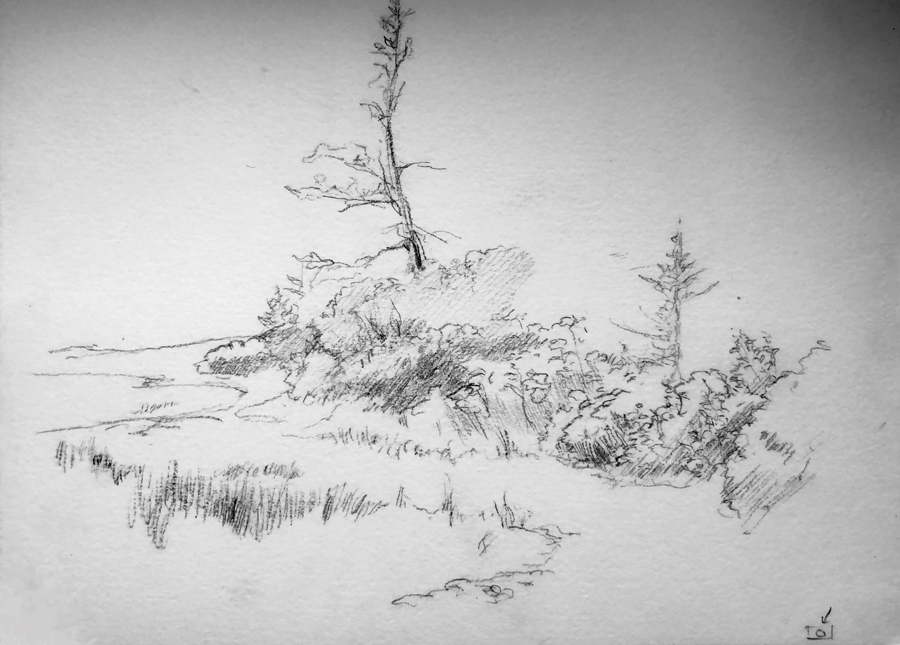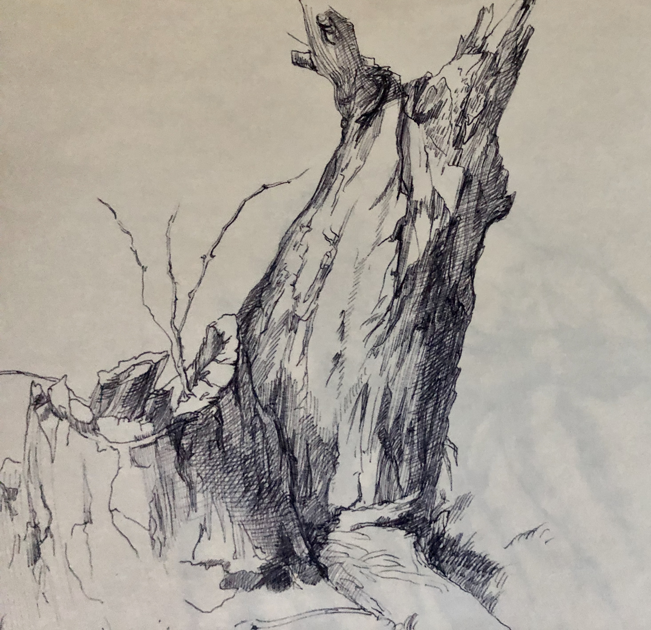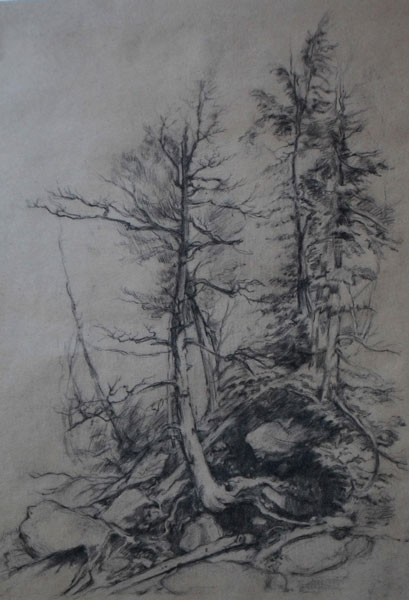
Landscape
There exists a difference between the classical approach to landscape and latter schools, such as Impressionist, Barbizon and Hudson River, which separated, to a significantly greater degree, the difference between the purpose and method related to making studies 'en plein air' compared to painting larger, more 'finished' works in the studio. Regardless of which direction one is drawn toward, landscape painting begins with landscape drawing - gaining experience related to outdoor elements such as foliage, rocks, clouds, reflections etc. A drawing syntax is also introduced enabling the student to create compositional studies for the planning of larger pictures. This syntax works for compositional drawings in all genres as well. Students are often surprised when they discover working in landscape helps in their figurative work.

Students who have learned to copy stationary subjects in a fixed, literal manner will find themselves at quite a loss when confronted with the movement and ephemeral qualities of nature. Truthfully, the challenges are similar to that of all the genres except more apparent in landscape. Students must learn how to strengthen their governing intuition by developing a conceptually simplified familiarity – enabling them to seize the artistically essential, and make good artistic use of this information without being overwhelmed by the otherwise bewildering complexity of the outdoors. However, one can also lean too far this way leading to a type of half success lacking somewhat in nature's overwhelming richness and complexity, what the French referred to as the minutiae – producing an unrefined effect which is somewhat simplistically broad and overly massy. In a well meaning attempt to protect the integrity of the big masses a sufficient amount of delicate scintillation, pictorial entertainment and detailed description is ignored. Artistic simplicity should never be confused with a lack of complexity. The elements which need to be included need to be studied and that means learning how to draw them and how to integrate these detail studies with larger pictorial concerns.




